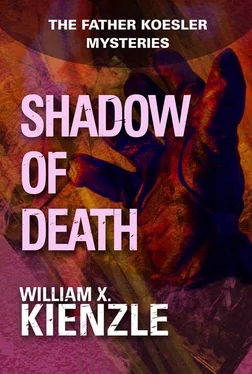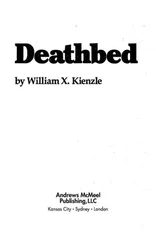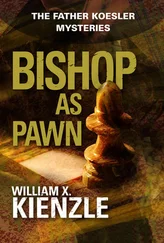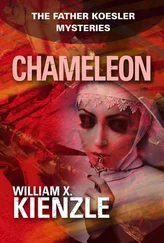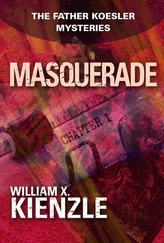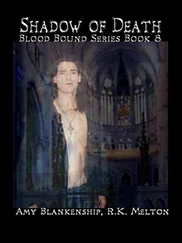“Amazing! But how did you happen to become an expert on Rastafarians?”
“I am not an expert.” Toussaint chuckled. “I know something about them, of course. Most of the black community knows of them. But when I first suspected and then learned that some of them might be involved in this plot, I began to read everything I could put my hands on about them.
“The Rasta is a complex way of life. Bob. This could help you understand it.” He removed a softcover book from his briefcase and showed it to Koesler. It was titled, Rastafari: A Way of Life, with a text by Tracy Nicholas and photographs by Bill Sparrow. Adorning the cover was the photo of a turbaned black man with a dreadlocked beard.
“Let me first tell you,” said Toussaint, “that when the Rastafarians were first developing in 1933, their creed included hatred for the white race, which was considered by the Rastafarians to be inferior to the black race. Also among their tenets was the desire to seek revenge for what they considered the wickedness of the whites; the destruction, downfall, and abasement of the local forms of the white government of Jamaica; readying themselves for a return to Africa and, of course, affirming Haile Selassie as their divine deliverer, and the true sovereign of the black race.
“This was in 1933. Nothing has changed much in the fifty years since then,” Toussaint continued. “The Rastafarians’ current belief is still that Haile Selassie is ‘the living God’; that whites are inferior to blacks—or that blacks are superior to whites; that the Jamaican establishment is hellish and the Jamaican existence is hopeless; that Ethiopia is Eden on earth; that the immortal and invulnerable Emperor of Ethiopia is even now arranging for disenfranchised blacks to be repatriated in Ethiopia, and that eventually, blacks will reign over all the earth.
“You see, Bob, they have not much altered their principles or goals over the years.”
“But why marijuana? I mean, I know it’s a popular drug, but, as far as I can tell, the Rastafarians are alone in adopting it as a group lifestyle—a sacrament, indeed.”
“I think because it is there. It grows abundantly on the hills and in the Jamaican mountains. And, I think, because it helps blot out the harsh realities of their lives. With the possible exception of my own country, Haiti, the poor blacks of Jamaica exist in the most abysmal poverty of anyone in the Caribbean.
“The Rastafarian poet Sam Brown voiced the horror of his people’s degradation and brutalizing poverty when he wrote of families—whole communities—forced to coexist with dogs and rats amidst unspeakable stench; of the old dying of despair and the young broken on the wheel of malnutrition, disease, and ignorance.”
There followed a prolonged silence as each man sat lost in his thoughts.
“I remember one of my few surgical experiences.” Koesler finally broke the silence. “They gave me a shot of Darvon. For a while there, everything looked pretty great: God was really in His heaven and all was really right with the world. I remember thinking at the time that if this was the kind of escape that drugs provide, I could understand why people who led utterly miserable lives could conceivably grow to depend on this kind of escape from reality.
“I guess I can begin to see why ganja has become a sacrament for the Rastafarians.”
“Yes.” Toussaint thought for a moment. “What with their peculiar beliefs and the constant use of ganja, they certainly march to their own drummer. It even reflects itself in their manner of speech.”
“How’s that?”
Toussaint thumbed through the book he had shown Koesler, and found the passage he was seeking.
“For one thing, Bob,” he looked up from the open book, “there is the importance for Rastafarians of the number one, which they also identify by its other significance: the alphabet letter ‘I.’ Whether it appears as the roman numeral or the letter of the alphabet, they always pronounce it as the letter, ‘eye.’
“It is as this book states,” and Toussaint read, “‘I’ is part of His Imperial Majesty’s title—Haile Selassie I . It is the last letter in Rastafari. ‘I’ is so important that a Rasta will never say ‘I went home,’ but would say instead, ‘I and I went home,’ to include the presence and divinity of the Almighty with himself every time he speaks. ‘I and I’ also includes bredren who also say, ‘I and I.’ In this simple way, through language, Rastafari is a community of people all the time.”
“That’s beautiful,” Koesler commented. “It’s similar to the Christian ideal of identity with God and each other through Christ.”
“Exactly,” said Toussaint, and smiled. “And they certainly did not get any help forming this belief from the example of their ‘Christian’ masters.
“But see, the book goes on to explain how the Rastafarian importance of ‘I’ can influence their entire speech pattern,” and again Toussaint read: “‘I’ is also used in combination with other words, to glorify them: by substituting ‘I’ for a syllable, the Rastas create their own meanings. The word ‘power’ becomes ‘I-ower,’ ‘thunder’ ‘I-under,’ ‘total’ ‘I-tal,’ and so on. The word ‘irie’ (pronounced eye-ree), is an ultimate positive. ‘All is irie’ means nothing could be better; the ‘irie heights’ or ‘ites,’ in Rasta talk, are tantamount to heaven or a strongly uplifting spiritual feeling.”
“Remarkable.”
“Yes. Bob, I think you should read this book. It will give you a good basic grasp of what the Rastafarians are all about.”
“I intend to. This afternoon after we check into our hotel. But you didn’t mention: Does this book have anything to say about the black fist symbol that we’ve found at the scenes of these attacks?”
Toussaint frowned. “No; as far as I could see there was no mention of that. Of course, this book is about the basic Rastafarian movement in general. I do know that at least some, if not most, of the Rastafarians are of the opinion that the Pope is the Satan of Babylon. But there is no mention in this work—or any others I have read—of any segment of Rastas who would want to kill the Pope, let alone any Cardinals.
“This smaller, almost isolated, group of Rastas are blazing a new trail, as it were. So, they are not in a position to rely on their own traditions as much as setting new courses. Very probably, they have borrowed the symbol of the fist from the Black Power movement in the States. There is every reason they should do so. Theirs is definitely, if peculiarly, a movement to establish Black Power over the white religious figure they perceive as the centuries-old oppressor of blacks all over the world.”
“But,” Koesler’s brow furrowed in confusion, “from what you’ve read and explained about the Rastafarians, I don’t understand how they could produce such violent members. Their whole creed would seem to lead toward and engender the formation of a peace-loving holy people!”
Toussaint smiled wryly. “Is that not the way of it, Bob? The Rastas—the Haitians, for that matter—might say the same about white Christians. Jesus taught only love. It was His one commandment. It was His teaching to turn the other cheek, to pray for one’s persecutors, to identify with those most in need.
“If the white Christians had lived up to their faith; if they had been true products of the creed they profess, Africa would still be home for the forcibly transplanted black men and women. How could one enslave the very people one has been instructed to love and serve?
“Here and there, there are Christians who live up to the faith. Just as there are Rastas who live up to theirs. In a sense, the Rastas we are now involved with are, at worst, not the run-of-the-mill selfish sinner. As evil as is their purpose, they are only trying to wipe out their principal enemy . . . or those whom their confused minds perceive as their principal enemy.
Читать дальше
